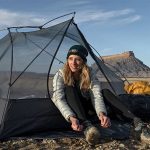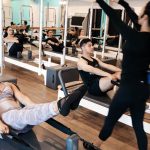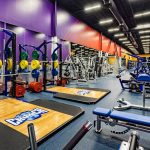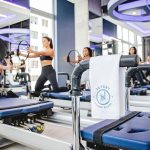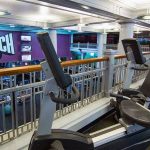The retail fourth quarter through January came in like a lamb, but went out like a lion as colder winter temperatures the last few weeks helped drive sales up for the month just as retailers looked to clear their floors of winter goods. For the retailers reporting monthly results, it appeared to be a bright end to a tough quarter, but for the retailers that only report quarterly results, strength in the last few weeks of the month wasnt enough to move the dial much. In the end, when the market reports fourth quarter earnings over the next month, all public company retailers will be on a level playing field and the late season boost is not expected to be enough for most to offset the loss of outerwear, boot, and other winter-related product sales earlier in the quarter. This January comparison also got a boost from the weather in January last year, when warmer temperatures helped push sales of Spring product.
The other upside for January came from the much-talked-about gift card. While recent studies have shown that roughly 20% of all gift cards go unused, those that are redeemed weigh considerably on the January numbers for many retailers. Redemption of gift cards against some early athletic footwear launches helped keep the sneaker numbers up despite the shift to boot sales for many. Based on point-of-sale data compiled by SportScanINFO, overall Sport Footwear sales were up roughly three percent for the January retail month, about double the growth of the narrower Athletic Footwear segment. The Sport Footwear measurement includes the Outdoor Footwear category, which posted sales growth in the low-teens for the month. In the last week of the month, Athletic Footwear sales were down in the mid-teens versus the same period last year, while Outdoor Footwear, which includes all boot categories, jumped more than 25% for the week.
In apparel, the SSI numbers suggest that Outerwear sales jumped more than 20% for the January retail month, helped by the last week of the month that showed growth at nearly twice that rate. Winter hardgoods also got a boost as Ski and Snow Sports product sales jumped in the mid-20s for the month, aided by a low triple-digit gain the last week of the month. Based on the SSI data, Toboggan and Sled sales were up more than five-fold for the last week of January.
According to a survey of 51 chain stores conducted by the International Council of Shopping Centers, chain store sales rose 3.7% for the month of January over the same month last year, beating estimates of a 3% improvement. Luxury stores led the way as sales grew by an impressive 11.2% for the month. Department chain stores also posted strong results as sales increased by 6.7% in January, according to the ICSC data. The other sectors that posted increases were apparel chain stores (3.3%), discount stores and wholesale clubs which both posted gains of 2.6%.
“As expected, consumers redeemed their gift cards in earnest in January giving retailers an added boost for the 2006 fiscal year,” said Michael Niemira, ICSC's chief economist and director of research. “In addition to gift cards, the late arrival of winter gave consumers the push they needed to finally purchase seasonal merchandise and help retailers reduce their winter-related inventories. As we look towards the new fiscal year for retailers, we expect comp-store sales to increase by 3 percent for February as retailers continue to clearance out their winter-related items to make room for spring merchandise,” Niemira added.
Foot Locker, Inc. posted a 0.6% decrease in 13-week fourth quarter sales to $1.55 billion from $1.56 billion in the comparable period last year. Comparable store sales decreased 3.4% after increasing 3.9% last year. In an exclusive interview with Sports Executive Weekly, Foot Locker management said that the U.S. Foot Locker business, which includes Foot Locker, Kids Foot Locker, and Lady Foot Locker, posted a low-single-digit comp sales decline for the quarter. Footaction had a flat quarter on a comp basis and Champs saw comps down in the low-singles. The International business comped down in the mid-single-digits, but saw a deeper drag from Europe, which posted a high-single-digit comparable store sales decrease. The U.S. business saw basketball flat for the period, while running was up and cross-training and boots were down for the quarter. Overall comps for the U.S. business were apparently positive for Q4 excluding the boots business. Apparel comps were down in the mid-single-digits.
Average selling prices were said to be up in the low-single-digits in the U.S. as the retailer continues to benefit from strong marquee footwear sales. Europe, which has seen even more of a swing to low-profile fashion athletic product, saw ASPs dip in the low-singles for the period. Still, management said that improved margins in Europe will lead to an improved bottom line there.
For the 52-week full year, sales were flat at $5.65 billion, but comparable-store sales decreased 1.2% after improving 2.7% last year. Excluding the effect of foreign currency fluctuations, total sales for the quarter and year decreased 2.4% and 0.8%, respectively.
The extra week in the current fiscal quarter and year accounted for $92 million in sales, which, when added to the quarterly and annual totals, would have seen sales increase 5.4% and 1.6%, respectively.
Management said that both gross margins and SG&A expenses improved in the quarter and, as a result, updated fourth quarter earnings guidance to a range of 67 cents to 69 cents per share, or a 10% to 13% improvement over the 61 cents reported during last years fourth quarter.
Hibbett Sporting Goods, Inc. reported strength in its activewear, licensed apparel, footwear, and team sports equipment segments help to push net sales for the 14-week fourth quarter up 25.1% to $151.2 million from $120.8 million for the 13-week period last year. Comparable store sales increased 5.9% for the comparable 13-week period after improving 2.5% last year. Mickey Newsome, chairman and CEO, commented that “comparable store sales were led by youth apparel and youth footwear.” For the quarter, the company opened 25 new stores and closed 2 stores.
For the 53-week fiscal year, net sales increased 16.3% to $512.1 million, compared with $440.3 million for the 52-week period ended January 28, 2006. Comparable store sales for the year increased 3.8% for the 52-week period on top of a 5.6% gain last year. For the year, HIBB opened 74 new stores and closed 10, bringing the total to 613 stores.
Shoe Carnival, Inc. saw sales for the fourth quarter increase 8.3% to $177.2 million from $163.6 million for the same quarter last year when including the benefit of the extra week. Comparable store sales for the thirteen-week period decreased 0.9% after improving 11.7% last year.
SCVL said the womens business was up in low-single-digits, while mens was down in mid-single-digits. The childrens business, which includes childrens athletics, was up in mid-single-digits. Mens and womens athletics were down in low-single-digits. Total footwear sales were down 0.7% and accessory sales were down in mid-single-digits. Management said the comp store sales decline was entirely due to a high-single-digit decrease in the Southern region.
Shoe Carnival reported that sales for the 53-week 2006 fiscal year increased 4.0% to $681.7 million from sales of $655.6 million for the 52-week 2005 fiscal year. Comparable store sales for the 52-week year increased 1.5% on top of a 6.9% gain last year.
The company reiterated its diluted earnings per share expectations of a 36 cents to 38 cents range for the fourth quarter of 2006 and $1.72 to $1.74 for the full fiscal year. This estimate compares to earnings per diluted share last year of 22 cents in the fourth quarter and $1.40 for the full fiscal year.
DSW Inc. saw net sales for the fourteen-week fourth quarter increase 16% to $329.1 million from $283.8 million during last years thirteen-week quarter. On a comparable thirteen-week basis, same store sales increased 1.0% in the 2006 quarter on top of an 11.3% increase last year.
Net sales for the fifty-three week fiscal year jumped 12% to $1.28 billion from $1.14 billion for the fifty-two week fiscal year last year. On a comparable 52-week basis, same store sales increased 2.5% after increasing 5.4% for the same period last year.
The Buckle, Inc. saw net sales for the five-week fiscal January period increase 43.3% to $40.1 million from $28.0 million for last years four-week fiscal month. Comparable store net sales for the five-week period increased 7.8% after increasing 3.0% last year.
Net sales for the 14-week fourth quarter jumped 14.1% to $175.0 million from $153.4 million for the 13-week fourth quarter last year. Comparable store net sales rose 4.8% in the quarter after slipping 0.1% last year.
Net sales in the 53-week fiscal year increased 5.8% to $530.1 million from $501.1 million for last years 52-week fiscal year. Comparable store net sales were flat to last year when they improved 1.4%.
Zumiez Inc. saw net sales for fiscal January, a five-week period, increase 81.4% to $23.4 million from $12.9 million during last years four-week period. On a five-week basis, net sales jumped 43.3% over $16.3 million last year. The company's comparable store sales increased 13.0%, for the five-week comparable period, on top of a 24.3% gain last year.
For January 2007, management attributed sales growth to both new stores and comparable store sales gains, which were driven by an increase in average unit retail and in-store transactions. Men's sales were again the primary positive contributor for the month, although all other departments also had positive comps.
The company also announced that Brenda Morris, CFO, would be leaving the company for personal reasons.
Pacific Sunwear of California, Inc. reported comparable store sales decreases for January, the fourth quarter, and the full year in both its PacSun and demo concepts and in turned announced that it plans to close 74 “underperforming demo stores.”
The 74 demo stores generated an operating loss of approximately $9 million pre-tax in the fiscal year, according to management. As a result of this action, the company expects to record a pre-tax non-cash charge of approximately $25 million to $27 million related to asset impairment and inventory write down costs in the fourth quarter of 2006.
PSUN also expects to incur cash charges during fiscal 2007 of approximately $10 million to $15 million attributable to lease termination, severance, and contingent agency fee costs. The company anticipates the overall impact of the store closings, net of expected inventory liquidation results and tax benefits to be realized during 2007, will be cash flow positive.
Net sales for the five weeks of fiscal January were $96.9 million, increasing 28.9% from $75.2 million during last years four-week period. Total company same-store sales for the five-week period decreased 7.7%, falling below last years 4.9% improvement. By concept, PacSun same-store sales decreased 7.3% after improving 5.1% last year and demo same-store sales decreased 9.5% after increasing 3.2% last year.
For PacSun, girls' apparel comps for the month were down “mid-single-digits,” with “significant weakness in short-sleeved tees and fleece” that was only “partially offset by strength in basic denim, swim, shorts, and tanks.” Guys' apparel same-store sales for the month were also said to be down mid-single-digits. Strength in knits, swim, shorts and outerwear were not enough to offset weakness in tees, fleece and fashion denim. The footwear business “comped up mid-single-digits” for the girls, but was down high-teens for the guys' business. Fashion footwear was said to have performed well, but total footwear comps were “down low-double-digits.” Total accessories were down “mid-single-digits” with “girls performing better than guys.”
For the month, total transactions per comp store were down mid-singles, while average transaction value per comp store was down low-single-digits. The average unit retail was up low-single-digits, but the average items per transaction were “down mid-single-digits.”
Total sales for the 14-week fourth quarter were $458.2 million, up 7.8% from $425.0 million during last years 13-week fourth quarter. Total company same-store sales decreased 4.3% after improving 2.2% during last years quarter. By concept, PacSun same-store sales decreased 3.4% after gaining 2.4% last year and demo same-store sales decreased 9.6% after improving 0.5% last year.










